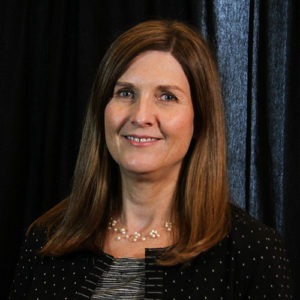Monigle Survey Ranks the Most Humanized Health Care Brand Experiences
When providers demonstrate warmth and an empathetic, human view of health care, it matters to consumers.
// By Althea Fung //
 People respond to people. But with the rise of technology in marketing, many brands sound less and less human. This is particularly true in health care, where organizations haven’t traditionally been consumer-centric.
People respond to people. But with the rise of technology in marketing, many brands sound less and less human. This is particularly true in health care, where organizations haven’t traditionally been consumer-centric.

Justin Wartell, managing principal, Monigle
But some health care organizations have recognized that in a market where consumers have more options and are more involved in their health care experience, it’s increasingly important for health care brands to form emotional connections with consumers.
“The things that stick with us, the things we remember, oftentimes those are when there’s a much more emotionally rich and more human connection,” says Justin Wartell, managing principal at Monigle.
Wanting to identify ways that health care organizations are successfully making human connections, the brand experience agency developed the “Humanizing Brand Experience: Healthcare Edition” report, ranking the top 200 health care systems in the U.S.

Kim Hofland, senior director of health care engagement, Monigle
“A lot of health care organizations look and sound similar. They’re focused on promoting what they think is most important — we have the best doctors, look at our physicians with their arms crossed, looking very serious,” says Kim Hofland, senior director of health care engagement at Monigle. “But the organizations that have a humanized brand focus on what’s important to consumers.”
Read on to learn what matters to consumers surveyed for the fifth edition of Humanizing Brand Experience, and how top brands respond.
“The whole report started because we saw opportunities to evaluate health care brand experiences in a better way, a more holistic perspective and more human perspective and this belief that we could look at brands and experiences in a new and different way,” Wartell says.
To produce the fifth edition of the report, Monigle surveyed more than 28,000 consumers online who received medical care in the past two years in the U.S. and who have medical insurance. Based on survey responses, the Monigle team found that the top brands — including Cleveland Clinic, The Ohio State University Wexner Medical Center, Johns Hopkins Medicine, and the University of Michigan Health — shared a few key brand factors.
Takeaway 1: Focus on Authenticity and Self-Care
Wartell noted that one thing many of the humanistic brands did well was focusing on self-care as a piece of the health care journey. “So many consumers are really pushing towards self-care options. There are a variety of reasons why more consumers are choosing self-care,” he says.
More Americans are investing in personal health and well-being. According to a survey from the data analytics and market research company IRI, nearly 70 percent of Americans make doing something to support their health and wellness several days a week or more a priority. In addition, the agency found the evolution of self-care was driven by technology that democratized health care, the shift from “sick care” to “well care,” and the rejection of the all-or-nothing approach to self-care.
Wartell says organizations that acknowledge and embrace the shift have successfully connected to consumers, no matter the reason for the change. “Organizations like [The Ohio State University Wexner Medical Center] have done a great job in taking a really strong position around self-care and deploying content that is accessible to those individuals who are making those choices as opposed to the traditional approach.”
“Nearly 70 percent of Americans make doing something to support their health and wellness several days a week or more a priority.
In 2021, The Ohio State University Wexner Medical Center launched a health information website, which provides readers with vetted health information on topics ranging from exercise and nutrition to health inequalities. The Health & Discovery website also highlights the clinical and research innovations of experts across the enterprise. Wartell says that although some may be concerned that this approach may push consumers away from traditional care, it strengthens the relationship.
“By taking this content stance, you’re not de-prioritizing in-person care or cannibalizing your existing business. Instead, you’re accepting that this is how consumers want to interact and engage with you,” he says. “Because you accept that you can then say, ‘I’m going to find the ways that I intersect with them.'”
Takeaway 2: Understanding Your Audience
In addition to providing helpful content, Wartell says best-in-class organizations are also very in tune with the needs of consumers. Organizations that invest in technology that allows them to segment audiences based on attitudes and behaviors have a better shot at connecting with consumers on a human level.
“Virtua Health in New Jersey is a great example of this. First, they take a really nuanced view of their segments of the population. Then, they find ways to connect those segments into how they classify people at the CRM level and in their electronic health record. They get really precise in their understanding of people,” he says.
“If you’re going to be more human, you have to understand that not everybody is the same.”
Justin Wartell
MonigleVirtua Health made a significant investment in becoming a digital- and analytics-focused marketing team when they contracted a CRM company that uses data science and AI to drive marketing decisions. Using data from electronic health records, first-party data, and other sources throughout the organization, Virtua Health could tailor messaging to the various segmented groups they identified.
“If you’re going to be more human, you have to understand that not everybody is the same. So, you must consider their background and attitudes about health, care, and wellness at a cultural level. You also have to think about how they use their time and the resources available to them and the accessibility of care,” he says. “You have to take a more nuanced approach, and segmentation is a really important piece of that.”
Takeaway 3: Taking a Stand
Consumers are increasingly interested in understanding the political and social ideology of organizations. For example, a 2021 Forrester survey of U.S. adults found that 47 percent of respondents associate a company’s CEO’s social, environmental, and political views with those of the businesses they lead; for Gen-Z, the rate was higher at 51 percent. In addition, about a third of respondents said they’re more likely to trust brands when they take a stance, with 43 percent favoring companies that take a position on social, environmental, and political issues.
Health care organizations like LCMC Health in New Orleans and Baptist Health in Miami are stellar examples of providers that take a stand on the impact social issues have on health, Wartell says.
Both organizations have made commitments to addressing health inequalities in the communities they serve. LCMC Health partnered with the New Orleans Department of Health to launch a health literacy partnership to educate locals on the importance of health care advocacy. Baptist Health is addressing health inequalities through a new health care facility opening in 2023 to help the population to be healthier and to reduce access disparities.
“Health care organizations think technology, or the doctors are most important. But people want the best people who treat them like an individual.”
Kim Hofland
Monigle“These organizations take a very warm and empathetic human view of health care,” he says.
Hofland says that focusing on the issues that matter to consumers — diversity, access, and individualism — can help brands take a more human approach. “Health care organizations think technology, or the doctors are most important. But people want the best people who treat them like an individual,” she says. “They want the doctor who doesn’t have his hand on the doorknob, trying to leave the room when I start talking. The person that understands I’m a human with distinct needs, who wants you to be there when I need you.”
Althea A. Fung is a digital content strategist and healthcare journalist. Reach her at fungus@altheafung.com.

